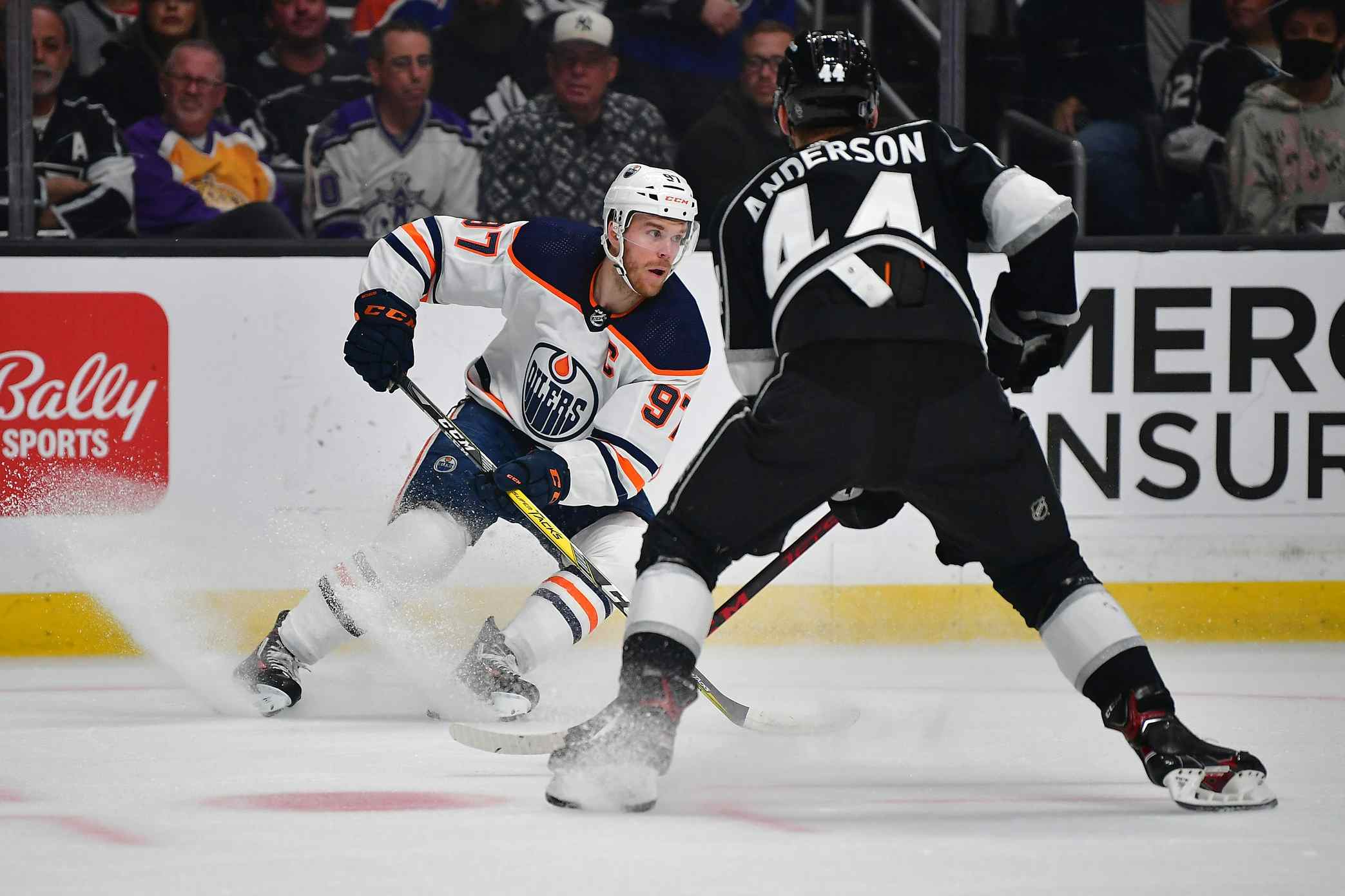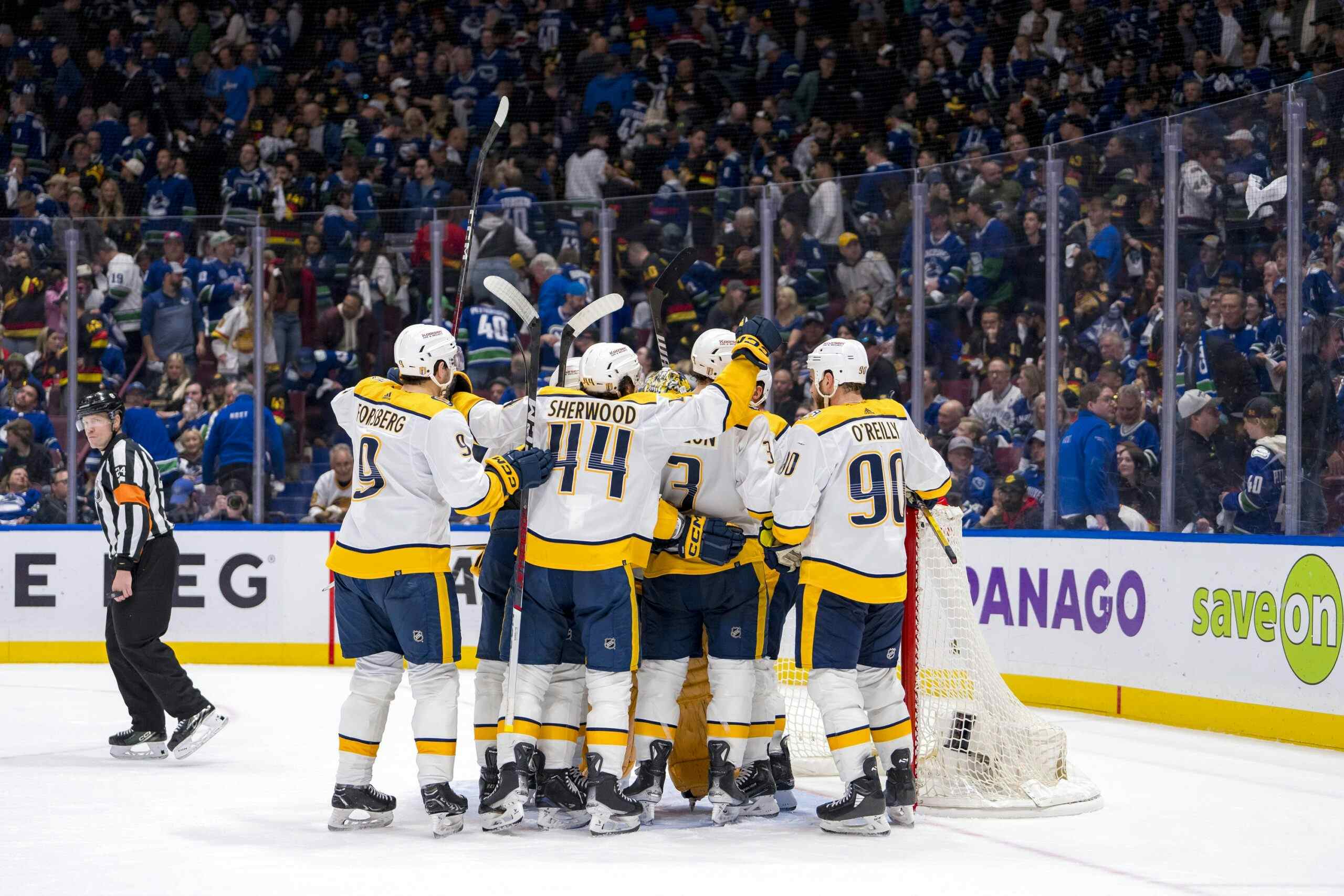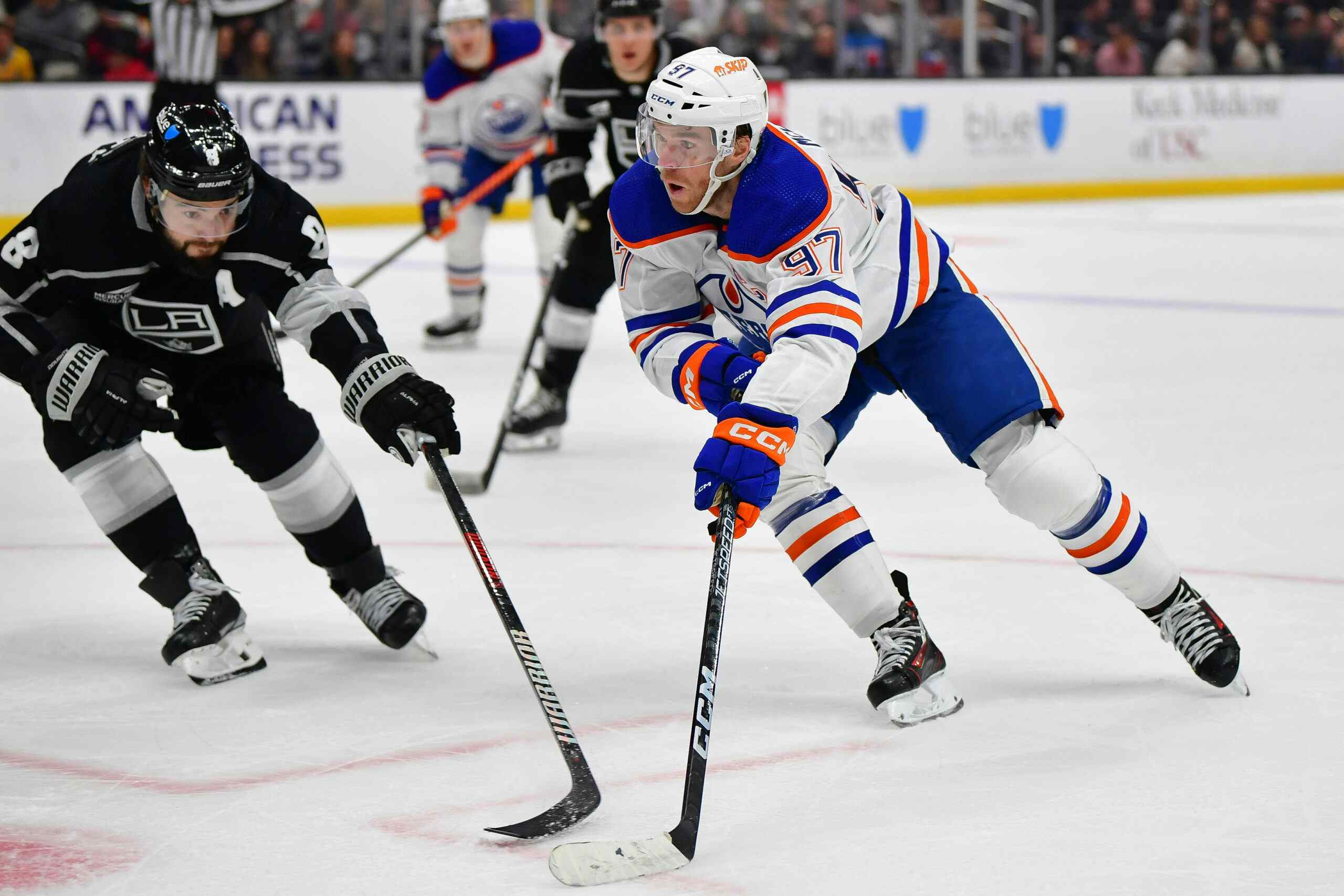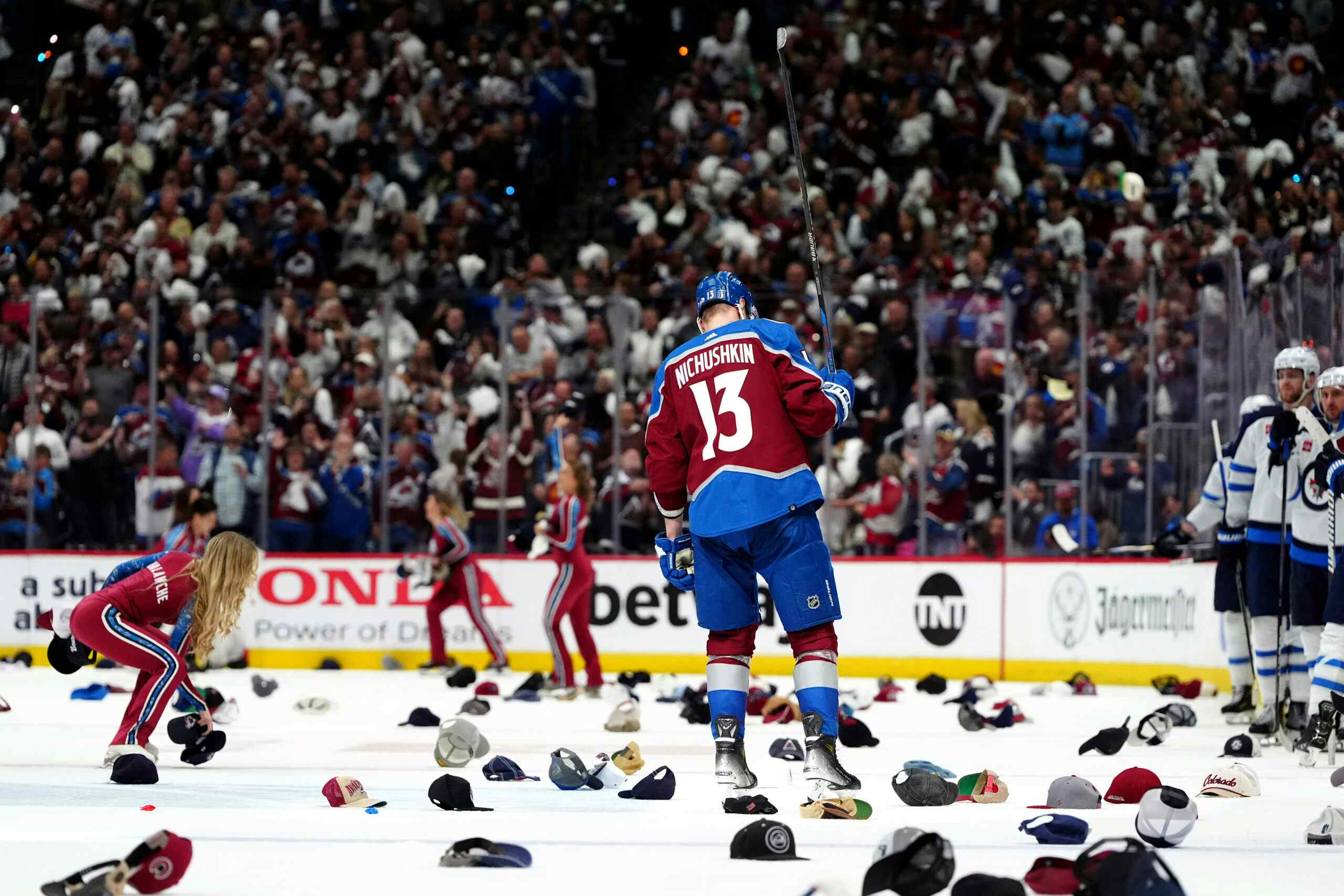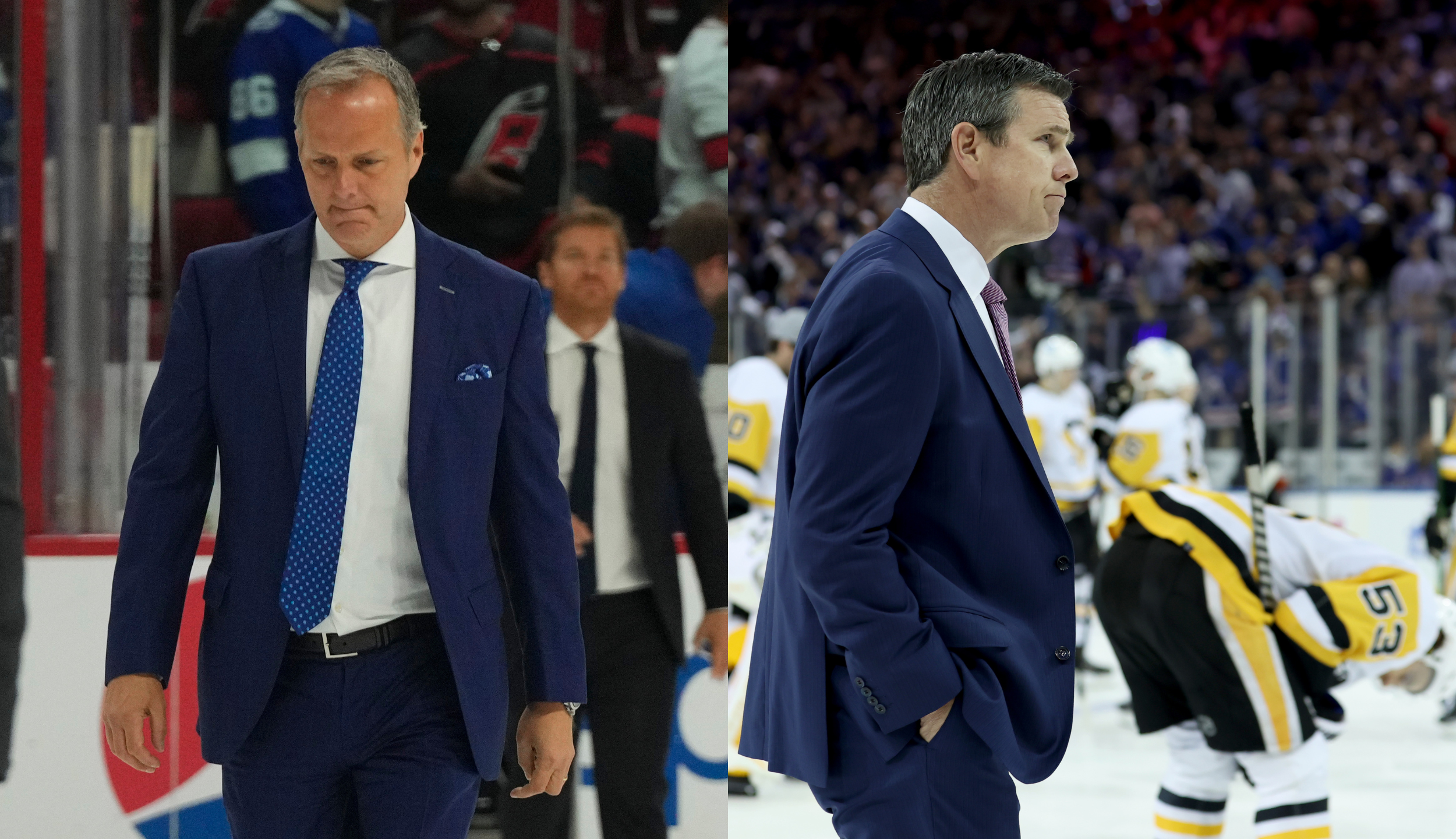TAKE IT SLOW, TAKE IT EASY
By Lowetide
8 years ago
Back in Oklahoma, Justin Schultz was part of a wicked offensive juggernaut aided by the lockout and a plethora of elite-level help. Since arriving in the NHL, it’s been an up and down three years (well two years and 48 games) and the young man appears to be at a career crossroads. How can the Oilers help?
Justin Schultz is a high event defender, a ‘chaos’ blue as I like to call them. Chances at both ends of the ice, bodies flying everywhere, jailbreak, coach doing eye rolls, fans up in arms either way. Any fool can see the young man has jet skates and does some things extremely well (his quick jump from RH defense to the scoring zone on the back door play is a thing of beauty) but there are significant issues with Schultz as a player.
In his first two seasons, Schultz wasn’t given the majority of offensive zone starts and that was a mistake. Last season, 2014-15, Dallas Eakins and Todd Nelson pumped up the jam and the result was a positive possession number.

The negative on this graph? 22:36. Dallas Eakins appears to have decided (early in the season) to run Schultz when chasing the game (down by a goal or more, that happened a stunning number of times) and there were games when Schultz played 25 minutes a night. You and I can agree that it was too much, but when his job was on the line that was the decision.
WHAT’S NEXT?
The Oilers and Schultz have one year to figure this out, and I don’t believe they’ll go long term if things don’t change in a quick hurry. Winning organizations put their young players in a position to succeed. We know this as Oilers fans, because we watched Craig MacTavish play hotshot draft picks in truly insane situations (anyone remember Jani Rita’s big chance coinciding with Scott Ferguson’s position change to LW? Same night, same line!) over the years.
Old Earl Weaver (Baltimore Orioles manages 1960’s to 1980’s) was a helluva guy. He was about four feet tall and grumpy even when sleeping. Earl believed in getting people on base and then getting them in via home run. He also believed in never allowing a pitcher to start until he was ready. Seriously. A Baltimore Orioles prospect would be groomed as a starter, project as a starter, act like a starter, but he was going to get time in the bullpen when Earl Weaver got him and he’d stay there until Earl Weaver felt he was ready. It was incredible, one of the most stubborn and consistent managing techniques in the game. Example: Mike Flanagan.
Hockey defensemen don’t have a bullpen but they do have third pairings and that’s the role Dallas Eakins used Schultz in last season (this was a change from 2013-14, suggesting a new strategy. I wonder if Tyler Dellow helped that along?).
Todd McLellan is the new coach and my guess is he’ll use Justin Schultz in a similar fashion but will also back off those large TOI totals. That much time is a tremendous amount of pressure for a still inexperienced defender and the Oilers should have played Jeff Petry more last season (hindsight being 20/20 and ignoring score effects) in my opinion.
WHAT DOES IT ALL MEAN?
I go back to Peter Chiarelli’s original press conference and what he said about the kids:
- Chiarelli: “Here it’s about the next stage of
their development, there are some young kids that need to be put in
their proper places, either here or in other leagues.”
My guess is third pairing, veteran partner, let Klefbom develop with a veteran too. Look, it isn’t sexy but if NHL teams have spent a century nursing (sorry) young defensemen into the NHL with a veteran mentor alongside, maybe it’s a good idea! Right?
Give Justin Schultz 18 minutes a night with a veteran defender, facing the soft parade with plenty of Ozone starts, and power play time as available, and then see where you are next summer. This relationship may end anyway but at least you’ve given the player a real chance to succeed. Those Orioles pitchers bitched and moaned forever about Earl’s patience but those Baltimore teams brought a lot of good arms to the majors and a high percentage had solid to outstanding careers.
I know he’s not a rookie, I know he’s 25 and I know he’s making $3.9 million in the coming year. We should not expect a transformation defensively, he’s simply not a good player without the puck and lacks many of the tools associated with effective defense. He can improve his coverage and pay closer attention—there were times he was lost and looked disinterested a year ago—and it certainly wouldn’t hurt to add some urgency to his game after making an error. Marc-Andre Bergeron (as an example) worked like a bugger to get back into the play after screwing up, and that’s important to fans (and I’m sure the coach appreciates the attempt even if he’s still fuming about the mistake).
This is not a typical career progression but he’s here for 2015-16 and
putting him in a position to succeed may improve his trade value in the
spring—or maybe Todd McLellan unlocks the player enough for him to stay.
putting him in a position to succeed may improve his trade value in the
spring—or maybe Todd McLellan unlocks the player enough for him to stay.
MY THOUGHTS
Justin Schultz, third pairing, with a veteran mentor, playing the soft parade. It’s the right thing to do. Unless you can trade him this summer for a more reliable, established NHL defenseman. A team in need of cap relief might find $3.9 million attractive and may also feel they can apply the things we’ve discussed (veteran mentor, fewer minutes, more focus on power play) and find value there.
Edmonton will have chaos without Schultz but could improve dramatically by acquiring a more reliable player. With Schultz, they can improve the chaos by giving him a reliable veteran and reducing exposure to the NHL’s best opponents.
(Barons photo by Rob Ferguson, all rights reserved)
Recent articles from Lowetide

